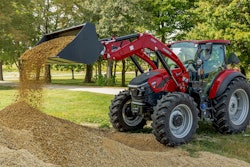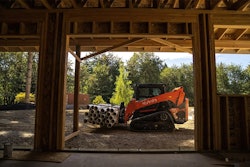 Photo: David Rowan/Flickr
Photo: David Rowan/FlickrEarlier this year Gov. Jerry Brown declared that the years-long California drought was official over, but he said that “conservation must remain a way of life.”
Many cities and counties are taking that advice to heart. In Sacramento, the city council has voted to continue drought-time restrictions, including limiting sprinkler watering to two days a week and increasing fines for second violations to $50.
“We want to develop a culture of long-term efficient water use in the city of Sacramento,” Bill Busath, Sacramento Department of Utilities Director, told CBS Sacramento.
There were several exemptions to the new ordinance including hand watering, smart controllers and drip irrigation systems, which all allow homeowners to water more often.
Meanwhile in other places in the state, agencies like Orange County Coastkeeper, the Chino Basin Water Conservation District in San Bernardino County and the Metropolitan Water District in Los Angeles County are all offering workshops and classes for homeowners on how to remove lawns despite there no longer being any rebates.
“We need to take responsibility for our water use,” Ray Hiemstra, associate director of programs for Orange County Coastkeeper, told the Los Angeles Daily News. “Like any other resource, we should be using it preciously. What we need to do is get into that new balance of dealing with the situation, and our easiest way to do that is through landscape.”
Orange County Coastkeeper offers a manual on how to create one of its SmartScapes, which is designed to conserve water, prevent runoff and create a habitat for urban wildlife.
The ironic thing is that the California drought may be the best thing that has happened to landscapes, which were previously over-watered.
A study conducted by the University of Utah researchers before the drought found that in Los Angeles the city uses 100 billion gallons of water in a year, and about 70 percent of that is dedicated to lawns.
“We very rarely found trees or lawns that were water-stressed,” Diane Pataki, coauthor of the study and professor of biology and urban planning at the University of Utah, told News Deeply. “Most landscapes in L.A. are over-watered. Plants were transpiring kind of the maximum amount that they physically could.”
The scientists conducted their research by spending years measuring the transpiration of trees and evapotranspiration of lawns in L.A.
Once they analyzed the data, they found that wealthier districts had twice the evapotranspiration of the poorer neighborhoods. This is due to a variety of factors, including larger sized lawns and more tree coverage.
One thing that the researchers did not expect to discover was the trees’ ability to use much less water than grass thanks to their lower leaf surface area.
“I have been surprised that we can maintain the tree canopy of L.A. with relatively little water,” Pataki told the University of Utah. “There’s this assumption that we need abundant irrigation to support trees. We can drastically reduce water use and still maintain the tree canopy.”
While Pataki sees many opportunities for water conservation, she warns that people shouldn’t be so careless when removing lawns or shutting off their irrigation that they kill off the trees as well.
“The other thing our study showed is that if you add trees to lawns you actually save water,” she told News Deeply. “Which is a little counterintuitive. But because trees reduce solar radiation to lawns so much, the lawn can receive 50 percent less water.”
Pataki and her colleagues are currently studying what changes have occurred as a result of the turfgrass removal programs. They are in the early stages of determining what people have replaced their lawns with, before they can calculate any actual water savings.
She is uncertain if people will revert back to their over-watering ways and is curious if the drought has changed their sense of aesthetics.
“L.A. was not a gravelscape city, unlike some other Southwest cities like Phoenix,” Pataki told News Deeply. “And now that these other types of landscapes are more common, is that changing people’s visual preferences? I think that’s going to be a big question going forward. And it turns out that doesn’t cool things down very much. It really is shading that cools things down.”










